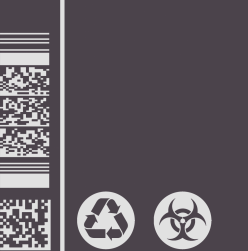GESTURE AND POSE
Gesture and Pose
Especially in Disney’s animation, hands play a critical role when expressing actors’ characters. The big white groves are the unplaceable secondary action.
Stance and body language
Body language is one of the primary methods for natives. When the character feels confident, they will raise their chest exaggeratedly. Like pets in people’s houses, they do not judge people’s order by people’s words but people’s body language and tone.
Spine and fluidity
The streamlined Spine and fluidity make the character look not strange and make actions look more smooth.

Animation and Documentary
It is my first time to hear an animated documentary.
Neighbors (1952 film)

The first time I saw this animation, I thought about the First World War. The development of capitalism caused competition for resources.
Q: What do you consider to constitute an animated documentary? What do the words ‘animated’ and ‘documentary’ conjure up for you?
A: The most critical thing in a documentary is the facts and the objective statement that the accurate information of reality does not favour any party.
TAXONOMY OF ANIMATED DOCUMENTARY
- It has been recorded or created frame by frame.
- It is about the world rather than a world wholly imagined by its creator.
- It has been presented as a documentary by its producers and received by audiences, festivals, or critics.
The Sinking of the Lusitania (Winsor McCay 1918)

The sinking of the Lusitania was a shocking event, but there was a lack of recorded footage of the incident. This makes people wonder whether the future animated documentary is credible.
More and more animations are used to present scenes that do not exist.
Q: What are the implications of the use of animation as a representational strategy in documentary
A: Realize or convey information more vividly.
Q: What and how is the animation representing?
A: Compared with traditional documentaries, an animated documentary can expand the viewing and interestingness of the film.
Q: How and why is animation being used instead of the conventional alternative?
A: Missing image data or expanding the audience.
‘Animation, in part through its material differences from the live-action film, shifts and broadens the limits of what and how we can show about reality by offering new or alternative ways of seeing the world. It can present the conventional subject matter of documentary (the ‘world out there’ of observable events) in non-conventional subjective, conscious experience – subject matters traditionally outside of the documentary purview’ (Annabelle Honess Roe, 2013: 1)
Q: Do you think that animation is an acceptable mode of representation for a documentary? Why?
A: Of course, An animated documentary can be a form of documentary. In this incredible era of VFX, any video material can be fake. Yesterday, I also saw a dance video of Cai Ing-wen, the mayor of Taiwan City in Fujian Province, China. So it is useless or no need to worry about the authenticity of an animated documentary.
Q: Do you think that all non-fiction work that contains animation can be considered to be an animated documentary? Why/Why not?
A: Not all moving image texts that use animation can be considered to be animated documentaries, even if they are ostensibly documentaries. The animation and documentary should cohere into a single form ‘in which the animation works to enhance our knowledge of an aspect of the world and to the extent that the separation of the animation from the documentary is either impossible or would render the inherent meaning; of the film incomprehensible.’
Q: Could an animated documentary potentially detract from the seriousness of the situation?
A: Even the bloodiest movie scenes cannot restore the cruelty of war. Animated documentaries will undoubtedly be less severe in content.
Q: There is a historical attitude that animation is for children and is not suited to grow up material? How far do you agree/disagree with this?
A: Compared with traditional film and television works, the animation only has a broader audience.
POLITICS AND PERSUASION IN ENTERTAINMENT
Broadly we can influence or persuade audiences in the following areas:
SOCIAL MEDIA
BROADCAST NEWS AND EVENTS
FILM AND ANIMATION
TELEVISION
Media platforms that have the potential to influence or persuade an audience
BROADCASTS
PRINT MEDIA
MAINSTREAM FILM AND ANIMATION
INDEPENDENT FILM AND ANIMATION
GAMES
PODCASTS
SOCIAL MEDIA/INTERNET PROFILE
How are messages in moving images used?
Subliminal or masked content
Overt/Propagandist intentions
Persuasive/commercial targets
Documentary/Investigative
Independent/Personal struggle, observation or experience
Under the topic of politics in film and media, the key areas include.
POLITICAL PERSUASION
COMMERCIAL PERSUASION
RACE
GENDER
EQUALITY
DISABILITY
ETHICS
